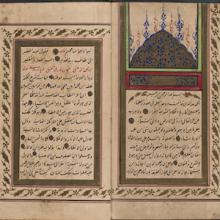Children

Electronic Text Corpus of Sumerian Literature
the collection is arguably made more valuable and useful by its focus on a limited cultural and historical context and by its presentation of texts that are less well known and more difficult to locate.
Yad Vashem - The World Holocaust Remembrance Center
The museum Yad Vashem is one of the foremost research centers for holocaust studies in the world.Long Teaching Module: Children in Late Imperial China, 900-1930
An exploration of primary sources on childhood in late imperial China (framed broadly as the Song through Qing dynasties, ca. 960-1911 CE) offers a window into lived experience and the diverse ways in which childhood itself could be imagined and articulated.

Long Teaching Module: Children’s Health in Early Modern England
Children and youth in early modern England (1500-1800) were subject to many diseases and physical hardships.
Long Teaching Module: Sexuality, Marriage, and Age of Consent Laws, 1700-2000
In western law, the age of consent is the age at which an individual is treated as capable of consenting to sexual activity. Consequently, any one who has sex with an underage individual, regardless of the circumstances, is guilty of a crime.
Rude Pravo, Water Pollution
Nestled in the very heart of Central Europe is a region that has come to be known as the Black Triangle. It contains land surrounding where the borders of Czechoslovakia, Poland, and East Germany meet.

Long Teaching Module: Education in the Middle East, 1200-2010
In recent years, westerners have been fascinated by the education of children in the Middle East, raising concern over whether or not schools teach extreme radicalism or anti-Americanism.
British Parliamentary Papers
Despite efforts to resist, by the end of the 19th century, almost all of the Middle East had fallen under the control of European powers. Whether in the form of a protectorate or colony, European powers made changes to the indigenous educational system that impacted children.

Long Teaching Module: New Zealand Childhoods (18th–20th c.)
This teaching module explores how colonization shaped the nature of childhood in New Zealand both among indigenous populations and those of European descent.

Food
The material culture of early childhood in the 21st century is characterized by an emphasis on biological age and related levels of cognitive and motor skill development.